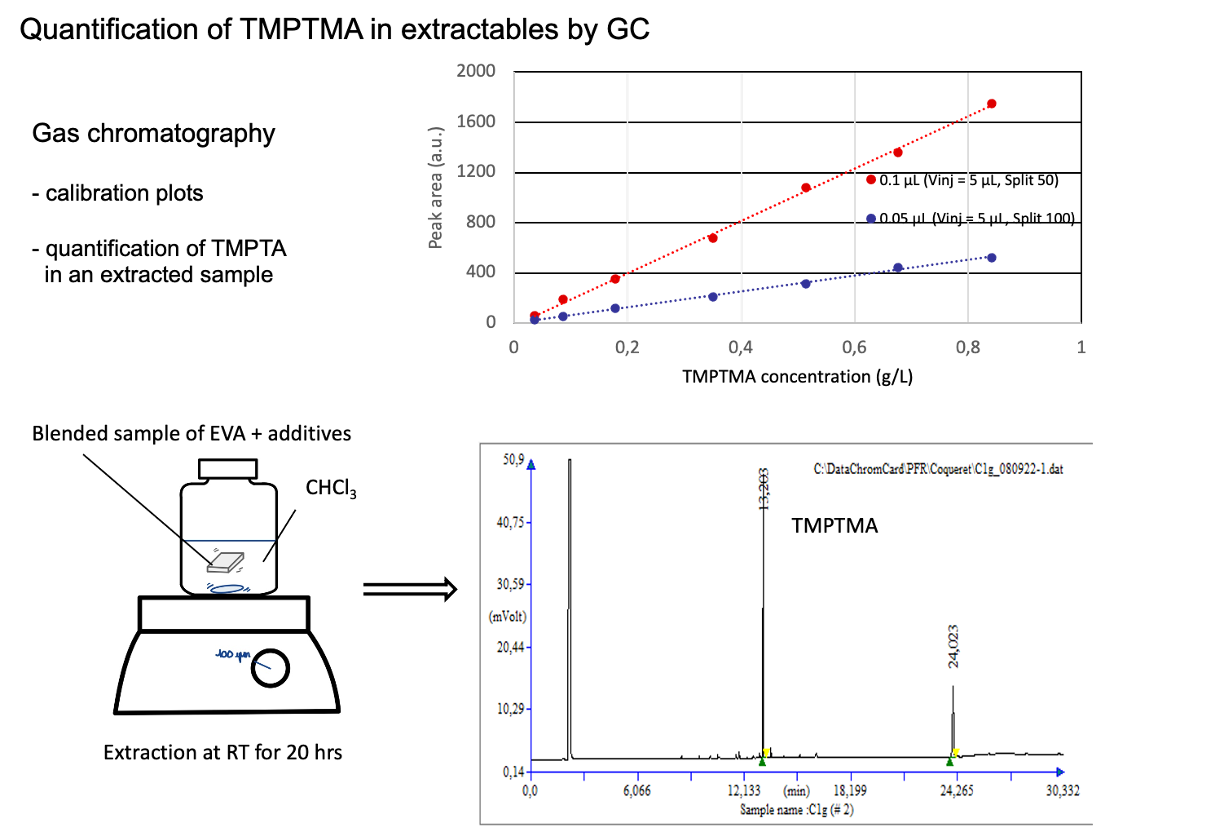How do cross-linkers and stabilizers compete in irradiated thermoplastics of relevance for the cable industry?
Vezhiny Komagan1,2, Ahmad A. Ghani1,2, Gabriela Tataru2, Julie Floch1, Christian Lagrève1, Xavier Coqueret2.
1Innovation and technologies, ACOME, Romagny Fontenay, France; 2Institut de Chimie Moléculaire de Reims UMR CNRS 7312, Université de Reims Champagne Ardenne, Reims, France
To improve the performances of radiation-curable plastic-based insulating sheaths produced for the automotive industry, there is a need for a deeper understanding and better control over the different stages of their fabrication process. These include the selection of plastics, fillers and additives, the search for optimized composition and blending conditions, and finally irradiation using well-adjusted parameters.
The analytical strategy used in this study was based on solution 1H nuclear magnetic resonance spectroscopy and liquid chromatography of the extractable fraction of organic compounds at the different stages of the blending and irradiation process.
The presentation will include (i) a review of the basic aspects and recent literature on the cross-linking of thermoplastics for electrical insulation, paying particular attention on the reactive additives, typically blends of cross-linkers and stabilizers; (ii) a focus on the advanced characterization of model EVA-based blends to assess the variations of the volume distribution of additives in various batches prepared as films, granules or strips using pilot-scale or industrial equipment; (iii) the precise quantification of the amount of reacted additives of both classes after electron beam treatments up to 100 kGy; (iv) a discussion on the competing effects of cross-linkers and stabilizers in EB-irradiated model EVA blends. The results revealed contrasting profiles representing the decrease of the concentration in extractable crosslinker or stabilizing agent as a function of the absorbed dose of radiation, depending on the chemical structure of the additives.